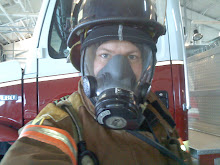 Finally it's time for me to post about one of my hobbies other than the TLEW. In case any of you didn't know I'm also an amateur blacksmith. My interests in this field are mainly related to making knives and chisels (hence the post's title), though I am planning on making tools and parts that aren't intended for cutting.
Finally it's time for me to post about one of my hobbies other than the TLEW. In case any of you didn't know I'm also an amateur blacksmith. My interests in this field are mainly related to making knives and chisels (hence the post's title), though I am planning on making tools and parts that aren't intended for cutting.Thus far I have made a 1/4 inch mortise chisel for my father out of 1095 high-carbon steel (salvaged from a worn-out file, donated by my father!) and a hot-set (a blacksmith's tool used for severing heated steel bars) out of S7 tool steel. Unfortunately I don't have pictures of either of these tools at the moment, I will post them as soon as I have them. Future projects include two more chisels for my father (a 1/4" standard chisel and a 1" standard chisel), several kitchen knives (both for myself and for others) to be made from 1095 steel, which in my opinion takes a much better edge than 440C steel (which almost all good-quality commercial knives are made from), a field knife from S7 steel (which, though it won't take as good of an edge as common knife steels such as 1095, 440C, A2 or O1, is virtually impossible to break without trying!) and possibly a Hardy from either S7 or O1 (this is another blacksmith's tool used for severing steel bars).
Bladesmithing is not an entirely new hobby for me; in the past I have tried to forge knives out of various materials, including leaf springs, bolts, large nails and assorted scrap, usually with almost no luck. Now that I acually know something about the behavior of steels, and the fact that I am working with known alloys, I am having considerably better luck.
I am also experimenting with "selective hardening" with my high-carbon steel projects. By carefully heating specific portions of my workpiece I can create an extremly hard (and therefore very sharp) edge yet leave the "meat" of the tool soft and tough. This can be done either during the quenching phase (which is only practical for chisels), or by selectively tempering the tool after quenching.
That's all I have for now. I know I've used several technical terms and numbers in this post, I will at least give you the definitions of the steel numbers I used. as well as a few applicable terms.
Hardness: This term is pretty self-explanitory. In steels it is usually measured on the Rockwell-C scale, with most knives falling in the range of 58-62 HRC. As a rule, the harder the steel, the sharper the blade.
Toughness: The ability of a material to withstand stress. In general, the lower the hardness the tougher the metal. However other factors, such as the alloy composition, affect toughness more than the hardness.
Quenching: The act of rapidly cooling steel to achieve hardening. The quenchant is determined by the alloy; water-hardening steels are quenched in water or brine, oil-hardening steels in oil, and air-hardening steels are simply allowed to cool in still air. The act of quenching sets the crystalline structure of the metal to an extremely hard, yet brittle, state. In general, unless absolute maximum hardness is desired the steel is immediately tempered to improve it's toughness.
Tempering: The process of heating a steel object to a specific temperature to alter it's crystalline structure to greatly improve it's durability, at the cost of a slight measure of hardness. Depending on the alloy tempering can occur at temperatures from as low as 200 degrees F to 1300 degrees F. As a rule, the higher the temperature, the greater the degree of tempering.
When steel is heated in air it changes color (due to various oxidation conditions) and blacksmiths use these colors to judge the degree of tempering.
1095: Plain high-carbon steel. Also called 95-point carbon steel. High-carbon steel is usually water-quenched, and as-quenched is EXTREMELY hard (up to 66 HRC). Plain carbon steel has very low heat resistance, and is therefore easily tempered.
A-2: Air-hardening, medium-alloy steel.
O-1: Oil-hardening, medium alloy steel. Somewhat tougher than 1095 steel, yet after tempering at typical temperatures retains a similar degree of hardness.
S7: Air-hardening, high-alloy, shock-resistant steel. As the description suggests this steel is EXTREMELY tough, and though it cannot attain the hardness of the previous steels it can withstand stresses that would literally shatter other steels of similar hardness.
440c: High-carbon stainless steel. A common knife-making steel that I have no desire to experiment with. My reasons are three-fold. First of all, many stainless steels are precipitation-hardening (or age-hardening), which I have no idea of how to execute. Second, I have read that stainless steels can be very difficult to forge, and third I have a prejudice that a knife that doesn't rust can't be as good as one that does...

5 comments:
Have you figured out a better "kiln" yet? Did dad make the handle for the chisel?
What I have is called a forge (Andy is the one who wants to build a kiln), and unfortunately I haven't gotten around to working out the bugs yet. Maybe this week.
Dad did make a handle for the chisel out of hickory wood, which looks quite nice.
Actually it, a 1/2 inch and a one inch chisel that I need to add to my set. I've got a complete set of quarter inch chisels! thanks...
Thanks for sharing this great content related Steel.
Very nice and informative blog about alloy carbon steelfor more info
Post a Comment